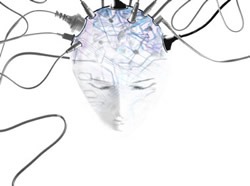 As these blogs go, this one may strike you as one of the more "duh" entries we’ve posted, but a recent study by CBS Research confirms what we’ve expected all along: Web offerings – ringtones, websites, podcasts, mobile features – actually enhance and increase audience for TV programs.
As these blogs go, this one may strike you as one of the more "duh" entries we’ve posted, but a recent study by CBS Research confirms what we’ve expected all along: Web offerings – ringtones, websites, podcasts, mobile features – actually enhance and increase audience for TV programs.
You may recall that Coleman/Arbitron project a number of years ago that strongly suggested that as broadband proliferates, consumers would become more web-active. That study has been confirmed in spades, which is obviously a key reason why CBS – and the other major networks – continue to roll-out web-based enhancements to their hit shows.
NBC calls it "TV 360," and for a new show like "Heroes," it includes providing commentary by cast members, and even character clues that will involve viewers even more deeply into the show. And it’s not just about ratings. Nissan has stepped up and become a major player in the sponsorship of these activities. This is what creating a community is all about. Listen carefully at that water cooler on Tuesdays following "24," or on Thursdays after "Grey’s Anatomy." Smart web tie-ins create buzz.
This is another reason why we have urged morning shows and other key personalities to start thinking "Internet" as they plan out bits, interviews, and segments. From the beginning, they have been taught that radio is "theater of the mind," but thanks to the World Wide Web, their words can be enhanced by pictures and other add-ons. Tools like webcams, podcasts, video, and ringtones can create even tighter bonds to DJs and shows.
And oftentimes, it’s just great programming. Consider how many interviews you hear on the radio that would have been much better had they been shorter. Think about a 10 minute interview with a Rock band that could have been improved had it been edited down to say, 4 minutes. And then consider posting the entire full-length segment on the website for those who are interested. And let listeners email these web resources to friends. (This is what NPR has been successfully doing for years.)
Then imagine how a visual could make a segment even better. Last week, I listened to a morning show interview a guy about a famous photograph, but sending listeners to the station website to actually see it would have been a simple, and effective, enhancement. And now that just about every listener has a camera with them at all times – in their cell phones – there’s no reason why the audience cannot contribute as well. That’s CGM at work, and it’s an obvious way to build website traffic, as well as more involvement and interactivity with a show.
I often hear radio people complain that they just don’t have the web resources of a major TV network ("Hey, we’ve got one guy who’s the webmaster for six stations!"). While that is clearly the case, simple web tie-ins can easily be accomplished by just about anyone at a station. The problem isn’t usually a manpower issue – it’s that stations still aren’t instinctively thinking of Internet applications when they’re planning promotions or morning show bits.
Now the research shows that these tie-ins aren’t just cool – they create ratings. That should get the juices flowing.
- Media And Technology In 2025: Believe It Or Not! - April 18, 2025
- In Radio, You Just Never Know - April 17, 2025
- The Secret To Making A Great Podcast (And Great Radio) - April 16, 2025




Leave a Reply